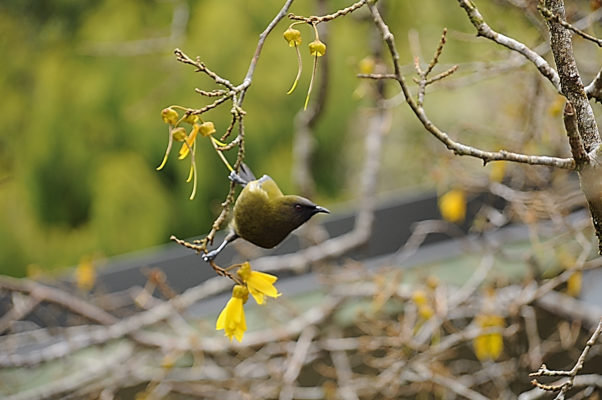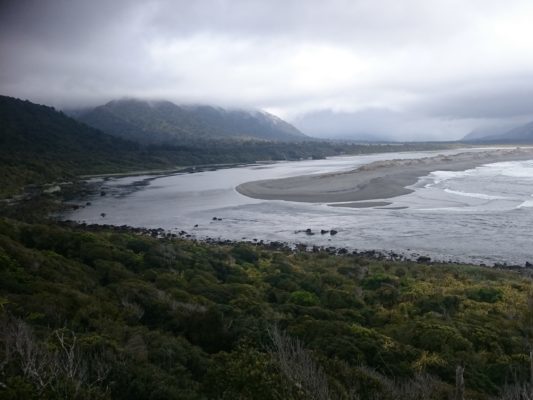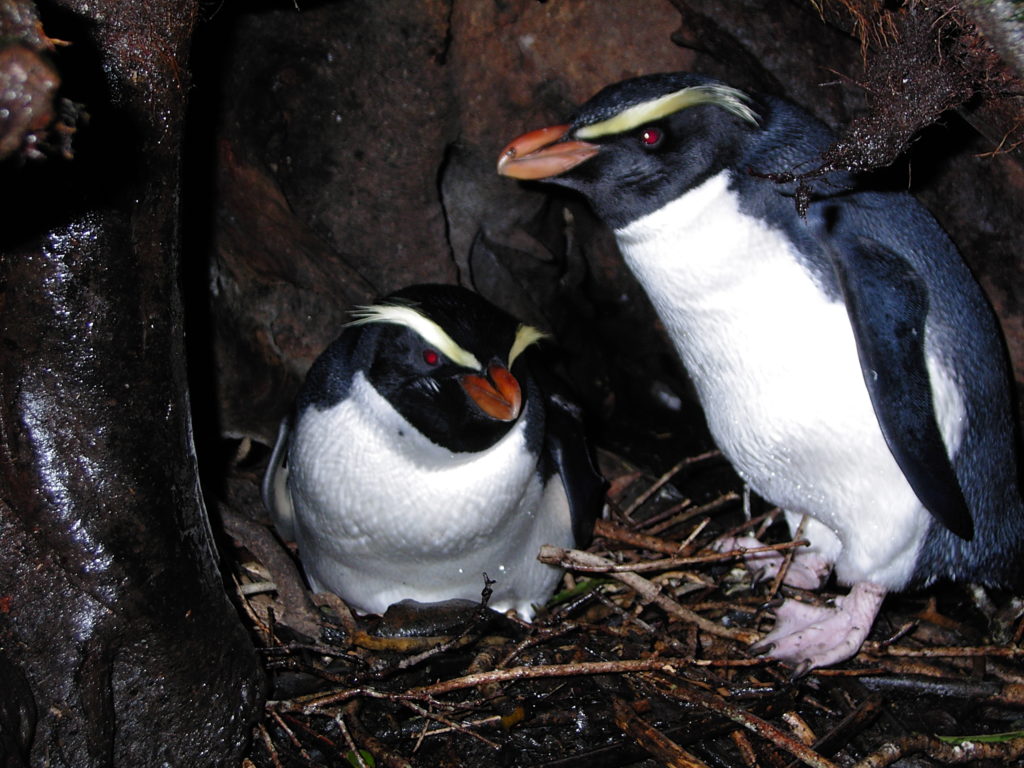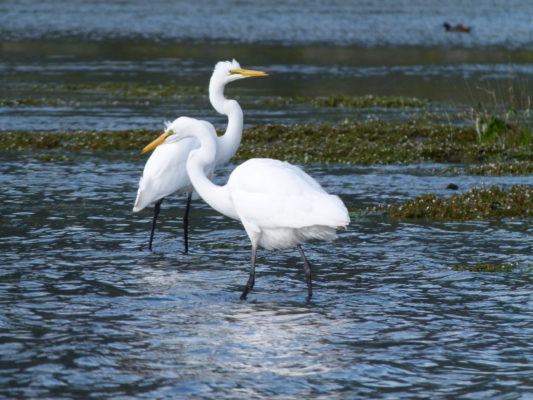Rifleman are spreading across Martins Bay in Fiordland and there are more kakariki and kaka – “lots more than ever encountered before”. Those are just some of the encouraging results reported after the latest bird counts commissioned by the Hollyford Conservation Trust and carried out by Te Anau company ‘Mainly Fauna’.
“We have had anecdotal evidence from everyone involved that they are seeing more birds,” says Ron Anderson, Chairman of the Hollyford Conservation Trust. He’s delighted that the latest official count provides scientific confirmation of those reports.

“I’ve been coming here for 45 years and only seen 6-8 kaka. Now local stakeholders and landowners are seeing groups of 60 or more! It means that the Trust has achieved it’s first major goal – saving the birds and increasing their numbers!”
It’s an impressive start for the Hollyford Conservation Trust which formed just 5 years ago. But it’s just the beginning for an organisation that is committed to continuing its work for the long haul.
“We’re aiming to succeed one step at a time,” Ron explains. “It’s not a short-term project and we’re not in a hurry. We need to be careful and ensure that if we bring other birds back to the area they will have a very good chance of survival.”
Robins, mohua and tokoeka, the Haast kiwi are three species Ron hopes might be returned to the lower Hollyford one day. In fact the tokoeka may be making its own way back.
“Someone thought they heard a kiwi recently,” says Ron, “Kiwi were living in the Hollyford not that long ago.”
The Trust is investigating the possibility of a Tokoeka translocation and there was a definite kiwi call recorded by DOC in recent times above the Pyke (relatively close to, but not within the project area). DOC plans a field trip in January to locate and take DNA from the mystery bird and if successful that will help determine the Tokoeka species previously present at Martins Bay – Haast or Northern Fiordland – and adjust the Trust’s focus accordingly.

While there’s no definite evidence yet that kiwi have survived or returned, it’s a tantalising possibility. In the mean-time the hard work continues to maintain and extend the trapping programme.
“Our biggest challenge has been putting the infrastructure in place,” says Ron. “We’ve cut over 200km of tracks to distribute the trapping system and we’ve had to buy the traps. It wouldn’t have happened without the support of our partners, funders and stakeholders – the landowners and regular visitors to Martins Bay. We now have a massive database of supporters who make donations.”
The Hollyford Conservation Project focuses on an “island” of 2600 hectares in the area surrounding and south of Martins Bay, Whakatipu Waitai, in the lower Hollyford Valley.
“It’s a beautiful area,” says Ron. “That’s what keeps me coming back. It’s got so many attributes – the podocarp forest, the beach with seals and penguins.”
The Martins Bay area of the Lower Hollyford includes one of most important dune systems in the South Island, home to thousands of nesting seabirds including the rare Fiordland crested penguins. There’s a unique lagoon and world-renowned wetlands, habitat for kotuku or white heron, fernbirds, bitterns, karearea, NZ falcon and many more.
When Ron and his family first started coming to Martins Bay, they used to just camp or stay in the Department of Conservation huts. Later they jointly built a hut on one of the blocks with other long-time visitors to the area. Then came a rare opportunity:

“About 15 years ago I bought a 50-acre block,” he says. “It was the McKenzie Homestead block and had only previously been owned by the McKenzies and then Davy Gunn who later drowned in the Hollyford River. Davy Gunn’s son set up a museum at Gunn’s Camp, but in his latter years needed to sell it [the 50 acre block] off.”
With ownership came a real sense of responsibility for Ron.
“I wanted to make sure it was really pristine,” he says, “But I was shocked at the possum numbers I was seeing – 15 to 20 possums in a night. There were lots of stoats and rats too and you could see the damage, especially with the rata. There were other plants too, like mistletoe that are endangered. How long would it be before the trees were severely damaged?”
There was, however, a limit to what Ron and wife Liz could do on their own.
“By ourselves, predator control in a single block was futile,” says Ron. “But how would it be – what would the block look like in 5-10 years? Then we were invited to a gathering in Queenstown that Peta Carey (now a Trustee) set up with the Department of Conservation and a large gathering of Hollyford stakeholders.”
A second gathering followed. But at first things were slow to get started.
“A lot of different people came together to try and get a plan together,” says Ron.
As often happens with large meetings, there was a lot of talking, but not a lot of progress.
“So I said, could I ask some questions,” Ron recalls, “And I asked for a show of hands: Is anyone opposed to saving the bush? Is anyone opposed to saving the birds? Everyone agreed unanimously that they wanted to save the bush and the birds.”
With that fundamental common ground established, Ron then went around the room asking everyone for ideas of what to do next.
“And then all these positive ideas started to come out,” Ron remembers. “People suggested Andy Lowe and Simon Hall as Trustees. They both have land at Martins Bay and experience in other conservation projects, the Hawke’s Bay Cape Sanctuary Project (Andy) and the Forest Lifeforce Restoration Trust (Simon). Someone else suggested Te Anau locals should also be involved and someone nominated Kara Edwards. She’s a direct descendant of Chief Tutoko of Whakatipu Kotuku.”
Suddenly everything started to come together.
“We didn’t know each other,” says Ron, “But by the end everybody was keen to proceed. We didn’t know how to do it or how we’d raise the money. But doing nothing wasn’t an option.”
Well pleased with how the meeting had gone, Ron thought he could relax, knowing that something was going to be done to help not just his own block of land but the whole Martins Bay area.
“And then someone said, ‘I nominate Ron Anderson as Chairman!’”
It’s been a busy 5 years since.
“Department of Conservation have been tremendous advocates and supporters of the project,” says Ron. “Local DOC staff Lindsay Wilson and Greg Lind have shared knowledge, skill, experience and resources. They’ve been outstanding.”
A shared sense of ownership of the project has also seen contractors and consultants become ‘part of the family’ according to Ron.
“The Leith family from Waikawa have also been outstanding. They’ll stay a week on end, regardless of the weather, cutting tracks through the bush and swamp.”
Three generations of the Leith family often work together.
“They work 10-hour days in the rain – really hardworking. That’s just a small example of the belief people have. They want to be involved and have ownership of the project,” says Ron. “And [project manager] Michael Pullar is very valuable. He runs ultra-marathons. Not many can keep up with him. We have to plead, ‘don’t go too hard’!”
Even so, Ron has been surprised by the noticeable changes achieved in just a few years.
“It’s exceeded my personal expectations,” he says, “But there’s still a lot to do.”
In total the Trust has 2152 bait stations, 386 double set DOC 200 stoat tunnels and 821 A24 rat traps, all set on a lightly cut and marked grid to allow serviceability while minimising impact on the habitat.
Hollyford Conservation Trust _ Monitoring Transects (PDF, 4MB)
Monitoring results is a key part of the Trust’s predator control work with 36 line transects laid out within the 2600 hectare project area, used to monitor mammal predators and native birds. In 2015, 140 tracking tunnels were deployed to monitor rats, with a target of no more than 5% rat tracking during the bird breeding season which begins in September.
Rat tracking peaked at 24% in July 2017 but fell below 1% after the September ‘Battle for our Birds’ aerial operation by the Department of Conservation in the hills surrounding the Trust’s project area, which was complemented by the Trust’s bait station work in the aerial exclusion zones.
“In the previous season we brought rats down from 65% to 4.3% with the use of bait stations alone,” adds Michael Pullar. “It was a mast year and it took a lot of time and expense to get rats under control, but it was great to see our systems given a serious test and prove their worth.”

Rat numbers remained very low in the December 2017 and March 2018 monitoring rounds, meaning that birds had the chance of a relatively rat-free breeding season last year and, although rat numbers began to climb again by June 2018, results were patchy. Large parts of the project area remained relatively rat free.
During the 2017-2018 year, the Trust’s contractors also trapped 69 stoats – well down on the 189 stoats caught in the previous mast-driven year. Possums too are well-suppressed, with the latest monitoring showing a Residual Track Catch Index of 0.67% RTCI, well under the upper target of 3%.
One of the Trust’s goals for the next 5 years is for that best-practice, baseline pest control operation to become self-sustaining from stakeholder contribution alone, without the need to apply to external funding agencies to meet the shortfall. Once that goal is met, those applications to external funding agencies can perhaps be used for another purpose – such as translocation of mohua, robins and kiwi back to the lower Hollyford.
“The robin translocation is already confirmed for March 2019,” says Michael. “It was supposed to happen this year but has been rescheduled twice because of poor weather.”
In the meantime, the birdlife that already lives there is exploding in numbers and there’s a lot fewer possums browsing on the mistletoe and southern rata. The predator tide is turning in remote Martins Bay – and it may have happened just in time.
To find out more or donate check out the Hollyford Trust website.

